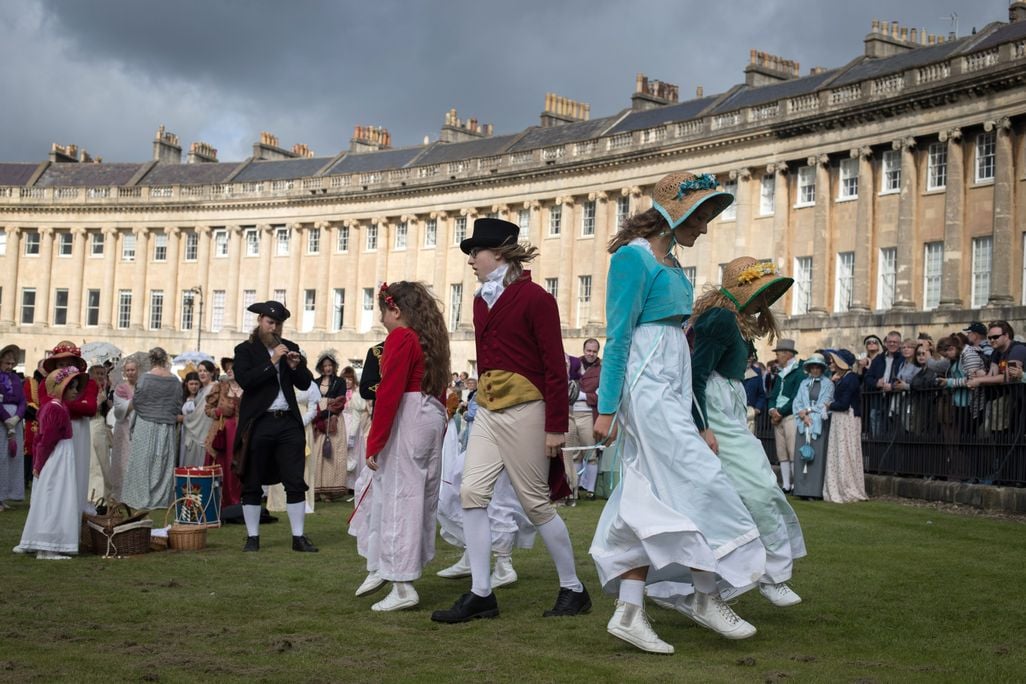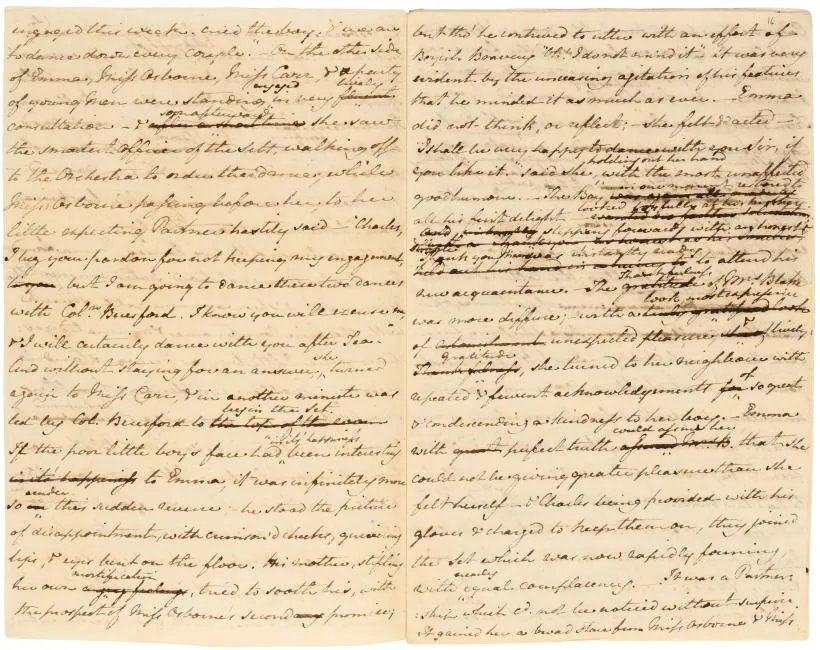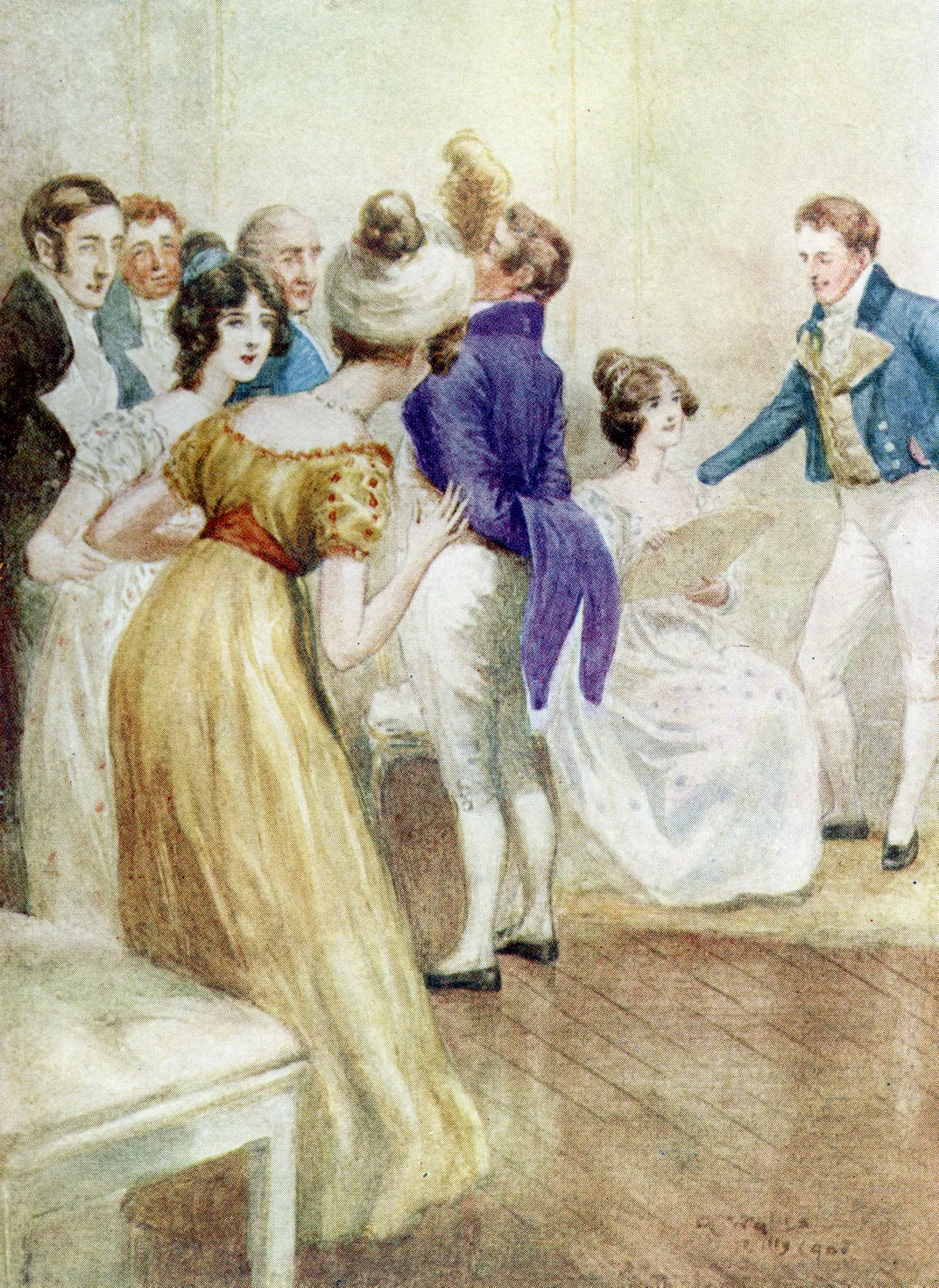Jane Austen Never Loved Bath—but Bath Loves Jane Austen. Now, the City Is Exploring Why the Novelist Was So Unhappy There
To celebrate the author’s 250th birthday, a new exhibition spotlights her complicated relationship with the English city where she set parts of “Persuasion” and “Northanger Abbey”

When Jane Austen visited Bath in 1799, she wrote to her sister, Cassandra, that her “first view” of the city in southwestern England had been “just as gloomy as it was last November twelvemonth.”
But even under more favorable conditions, the city failed to please Austen. When the English novelist moved there with her family in 1801, she complained that her “first view of Bath in fine weather” had been a disappointment, too. “The sun was got behind everything,” she wrote, “and the appearance of the place from the top of Kingsdown was all vapor, shadow, smoke and confusion.”
Austen spent five mostly unhappy years in Bath. But in the two centuries since, the city has come to adore its famous former resident. Bath is home to the Jane Austen Center, which hosts an annual festival devoted to the author, and tourists dressed in Regency-era attire can always be found on Austen walking tours.
This year marks Austen’s 250th birthday, and the city is pulling out all the stops. One of the items on the agenda is an exhibition titled “‘The Most Tiresome Place in the World’: Jane Austen & Bath,” which spotlights her negative feelings about the city.
“Bath is known for Jane Austen, and I think just about every organization in Bath, including us, use it,” Izzy Wall, the show’s curator, tells the Guardian’s Steven Morris. “We benefit from the association. But she didn’t like living in the city. She’s got lots of not particularly pleasant things to say about it.”
Quick facts: How many of Jane Austen’s novels were published in her lifetime?
- Austen published Sense and Sensibility, Pride and Prejudice, Mansfield Park, and Emma before her death in July 1817.
- Northanger Abbey and Persuasion were published in December 1817.
Born in 1775, Austen grew up in the Hampshire countryside, where her father served as a clergyman in the village of Steventon. She thrived in this idyllic setting, spending her childhood writing short poems and parodies for the amusement of family and friends. As she entered her early 20s, she worked on first drafts of Sense and Sensibility, Pride and Prejudice, and Northanger Abbey.
That all changed in 1801, when her father retired and relocated the family to Bath. Austen was distraught, and legend has it that she fainted when she heard the news (though this story is probably apocryphal).
During her time in the city, Austen didn’t get much writing done. She started a novel called The Watsons, which she would later abandon. A segment of the manuscript, on loan from the Bodleian Libraries in Oxford, is on view in the exhibition. Curators think the show marks the manuscript’s first return to the city since Austen’s lifetime.

Even though Austen’s residency in Bath wasn’t productive, it was generative. “The scandals and shallowness of the city fueled her cynicism and wit; nothing escaped her scathing pen,” write the exhibition’s curators in a statement. The city also serves as the setting for parts of Persuasion and Northanger Abbey. (The title of the exhibition comes from a line spoken by clergyman Henry Tilney in Northanger Abbey: “For six weeks, I allow Bath is pleasant enough; but beyond that, it is the most tiresome place in the world.”)
What would Austen think of the tourism industry she inspired, which includes everything from parasol workshops to croquet lessons? When the Financial Times’ Jemima Kelly traveled to Bath for a five-day Austen-themed tour earlier this year, she found “more than a whiff of ‘Bridgerton,’ Netflix’s Regency-era romp-com, about [the] proceedings,” including seminars with titles such as “Bath’s Assembly Rooms” and “The Language of the Fan.”

However, other lectures meaningfully engaged with Austen’s enduring appeal. “Her narration takes us into the minds of her characters,” John Mullan, an Austen scholar at University College London, told Kelly’s tour group. “Her dialogue reveals each character in his or her total singularity. She doesn’t tell you what motivates people—she lets you work it out.”
Austen left Bath in 1806, soon after her father died. Back in the countryside, where she lived with her mother and sister, she began writing again, completing three more novels—Mansfield Park, Emma and Persuasion—in the years that followed. In an 1808 letter, which is also on display in the exhibition, she noted the anniversary of her departure: “It will be two years tomorrow since we left Bath for Clifton, with what happy feelings of escape!”
“‘The Most Tiresome Place in the World: Jane Austen & Bath’” is on view at No. 1 Royal Crescent in Bath, England, through November 2, 2025.

